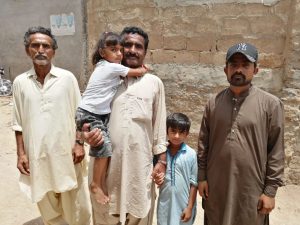With the declaration of river Barak as National Waterway-16 (NW-16) by the Inland Waterways Authority of India, the navigational prospects of the Meghna river system have come to limelight. The Meghna basin, fed by a number of rivers originating in the hills of Manipur, Mizoram, Nagaland and Tripura, supports the lives of local riverine communities with its extensive systems of wetlands, flood plains and fisheries. Inland navigation in these rivers would not only improve hinterland connectivity of this isolated landscape but would also integrate it with mainland India through the Bangladesh-India Inland Waterways Protocol Routes.
Karimganj in the state of Assam in India and Zakiganj, in Sylhet Division of Bangladesh, both located on the banks on Kushiyara River, are the entry and exit points of trans-boundary cargo through Protocol Route 3 (Kolkata-Karimganj). Improving navigability up to Karimganj and linking it with NW-16 from Bhanga to Lakhipur (121 kilometres) will provide better transit connectivity between Kolkata and the hinterlands of lower Assam, Tripura, Nagaland Manipur and Mizoram. It can facilitate cargo movement to and from Bangladesh for key commodities such as fly ash and food grains. The dredging operation between Bhanga and Silchar has already been completed. India and Bangladesh have initiated joint dredging from Ashuganj to Karimganj to improve the navigability of protocol routes.
Given these developments, as part of an on-going Oxfam programme on Transboundary Rivers of South Asia (TROSA), CUTS International has conducted a study in the rivers of Kushiyara, Haora and Gumti to explore the prospects of cross-border trade through inland waterways and its possible impact on riverine communities. At present, bank to bank cargo movement using row boats takes place from Karimganj to Zakiganj across the international border of the Kushiyara River. Zakiganj on the Bangladeshi side is hardly 300 metres away from the Indian side. Mostly fruits and horticulture commodities such as apples, citrus fruits, grapes, oranges, kinnows, pomegranate, betel nuts, and ginger are exported from India to Bangladesh after their customs clearance.
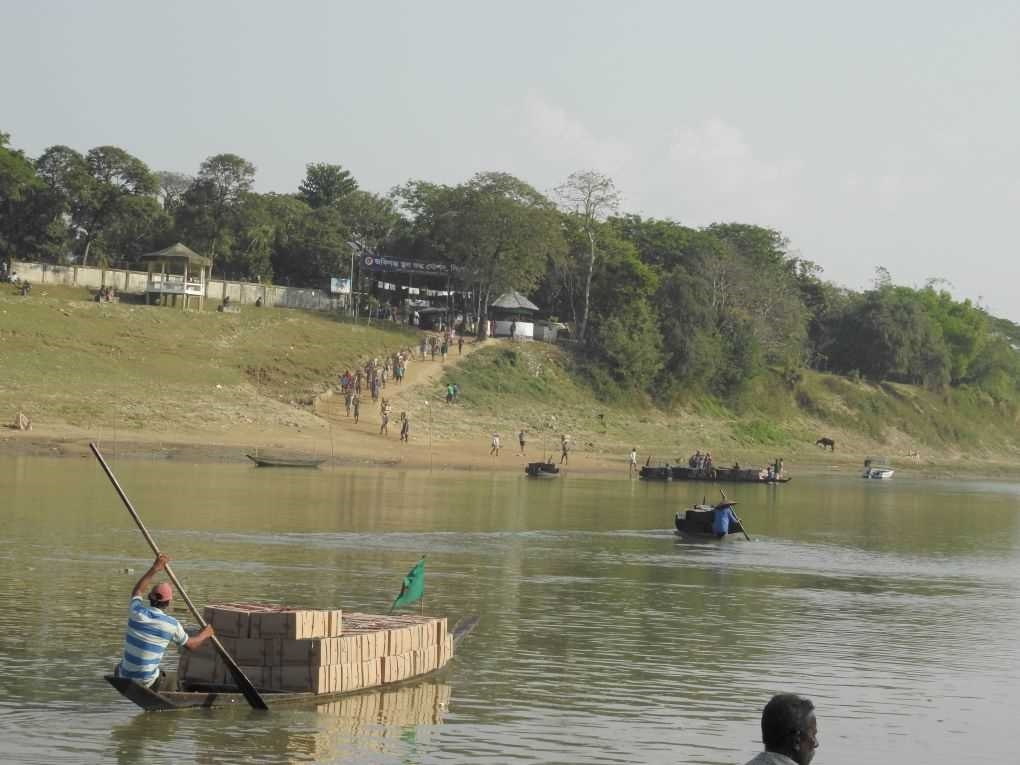
This arrangement sustains a local support system by engaging people for loading, unloading and transportation of traded commodities from nearby warehouses, thereby providing livelihoods to 400-500 people in each country. All 12 registered boats plying across the border are Bangladeshi boats and the cargo movement is from India to Bangladesh. There are about 40-50 small trucks/pick-up vans engaged in this trade as well.
There is also a high demand for Bangladeshi rice and tomato varieties in the border districts of India, but an absence of proper linkages with traders on the Indian side has limited their trade to the informal sector. However, traders in Karimganj are hopeful that if the river is made navigable until the town of Ashuganj in Bangladesh, goods from Assam, Meghalaya and Manipur can reach Sylhet’s market, which is a major trading hub in Bangladesh.
On the other hand and unlike Assam, inland navigation is not popular in Tripura, India. Haora and Gumti rivers originate from the hills of Tripura and are primarily used as a source of irrigation and drinking water. Extraction of huge amounts of water from the Gumti River for irrigation purpose has considerably reduced its discharge and velocity and increased sedimentation downstream, thereby impacting navigation.
Unlike the trans-boundary trade happening though the land customs stations in Assam and West Bengal, custom stations in Tripura were mostly busy with imports from Bangladesh. Cement is the single most important imported product, accounting for more than 84% of the value of trade on average through the Srimantapur custom station over the last five years.
Interestingly, in 2018, more than USD 350,000 worth of coal was imported from Bangladesh, which has no coal deposits of its own, and imports coal itself. Following the ban on coal mining in the Indian state of Meghalaya, Tripura’s requirement for its brick kilns and tea factories has been met through these imports, which originally come from Indonesia, South Africa and Australia through Bangladesh’s Payra and Chittagong ports. It is then transported to Daudkandi by medium sized vessels/barges. From Daudkandi, it is transported by tucks to Bibir Bazar custom station in Comilla, which is adjacent to Sonamura, India.
Our study has found that the Gumti River is navigable between Daudkandi to Comilla during the whole year. Considering the low lying bridges over the river between Comilla and Daudkandi, small boats of 20-25-tonne capacity make a good case for trans-boundary movements of local goods. For this to come about a few shallow locations close to the border need to be cleared by dredging and Daudkandi-Sonamura stretch should be considered as part of Bangladesh-India Inland Waterways Protocol Routes.
Though coal is a commodity of immediate interest to Indian traders, local farmers can also benefit by trading vegetables and other agricultural products provided non-tariff measures related to their standards and port restrictions are addressed. Small-haul trans-boundary trade between Sonamura and Daudkandi through the Gumti River is a promising as it can be done by using 20-25 tonnes vessel capacities. Traders can avail facilities at the land custom stations of Srimanatapur and Bibir Bazar in India and Bangladesh, respectively.
This is not the case for the Haora river, though. The proximity to well-developed infrastructure at the Integrated Check Post in Agartala, Tripura and the railway connectivity being developed between the two countries through Akhaura makes land and rail based trade easier. Additionally the Haora River is not only very lean but also does not have navigable depth.
In short, the wetlands in the Meghna basin on the Bangladeshi side are rich in fisheries resources and these are of high demand in India. Similarly, vegetables grown in Tripura, India can fetch a good market in Comilla, Bangladesh. Such localised trade can provide better support to the lives of riverine communities, provided necessary regulatory infrastructure for trade facilitation is created. Trade-related infrastructure development such as cargo terminals, warehouses and support services will provide further employment opportunities to the local population.
With 29 trans-boundary rivers between India and Bangladesh in the Meghna basin, riverine livelihoods in border areas are vulnerable. Such locations are generally characterised by inadequate infrastructure, which result in widespread, multi-dimensional poverty. With little or no industrialisation, these border areas are prone to illegal activities including human trafficking and smuggling. Trade-induced improvements in physical and regulatory infrastructure will eventually improve the quality of life of these communities as there will be more employment opportunities leading to decent education and healthcare, among other benefits.
See: Ganga-Brahmaputra-Meghna world’s most vulnerable delta
Bipul Chatterjee ([email protected]) is the Executive Director and Veena Vidyadharan ([email protected]) is a Fellow at CUTS International, a global think- and action-tank on trade and economic policy; Views are personal
![<p>Trade provides much needed goods as well as employment in Karimganj [image by: CUTS]</p>](https://dialogue.earth/content/uploads/2019/07/DSCN1694-1.jpg)
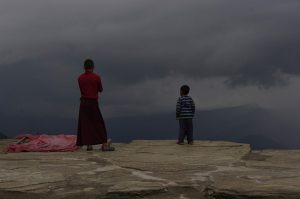

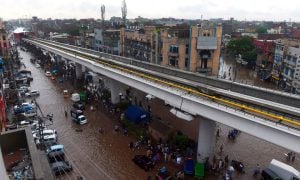
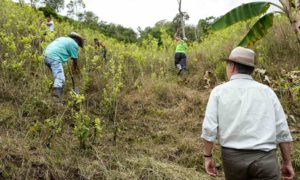
![The Amarnath cave and the market near the shrine. Besides the market, there is a large langar (food canteen) which provides food to the pilgrims during the day; and dinner for those who stay at the site for the night [image by: Athar Parvaiz]](https://dialogue.earth/content/uploads/2019/07/1-1-300x199.jpg)

![Upendra Prasad Singh, the Union Secretary for Water Resources [image courtesy: Jal Shakti Ministry]](https://dialogue.earth/content/uploads/2019/07/UP_Singh_Photo_Jal-Shakti-Ministry-1-300x164.jpg)
